




















All above images from OMA’s page on Facebook
Text from OMA.eu:
In the beginning of the 1980s modern architecture was always presented as lifeless, puritanical, empty and uninhabited. It has always been our intuition however, that modern architecture is in itself a hedonistic movement, that its severity, abstraction and rigor are in fact plots to create the most provocative settings for the experiment that is modern life.
Our presentation was to illustrate this point by bending the Barcelona Pavilion and systematically develop a project of its all human occupancy related to physical culture in the widest possible sense of the word. The house will be both desecrated and inaugurated, and show its perfect appropriateness for even the most suggestive aspects of contemporary culture. Action suggested by projection and light-effects and an abstract soundtrack of the human voice – somewhere in the ambiguous zone between exercise and sexual pleasure – will complete this spectacle, whose aim is to shock people into an awareness of the possible ‘hidden’ dimensions of modern architecture.
The discovery of the Barcelona Pavilion
The grand exposition closed.
The crowds were gone.
The King and Queen had signed the book.
The pools were empty.
Back home, Germany was in confusion.
The pavilion was too heavy to move easily, unlike the other temporary pavilions, which looked much more like buildings.
It was decided to leave the pavilion as a gift to the Spanish, until a decision could be made on what to do with it, and so it stood, a gothic outpost in the land of the Moors.
The political situation became tense in Spain and issues other than architecture became more important. Bombs went off in the vicinity.
In the turmoil, the presence of the pavilion that had always been so natural was overlooked completely.
At some point for a few days the pavilion became headquarters for the Republicans but they quarreled about the space, who would be inside, who would be covered, who would be in the open air. In the end, one of them made a plan so ridiculous, with such an absurd profusion of desks, cabinets, chairs, and waiting benches that the result was catastrophic. This experience made the Republicans the first to decide that modern architecture didn’t work.
The pavilion was abandoned once again.
In later fighting it was seriously damaged. For the first time, the world could see the pathetic sight of modern architecture, in ruins but no one had time to notice.
The new regime was serious about resolving the issue of the pavilion once and for all. They had good relations with the new government in the pavilions homeland. They did not like the former Republican’s headquarters and decided to send it back to its home by train, as a friendly gesture.
The journey was complicated, even the railroad tracks of each country had a different width, necessitating many transfers and after a long delay the pavilion arrived back in Berlin.
The pavilion was now an architectural orphan, its creator had just departed for the USA, and the new government was extremely different, now everyone was against modernism. They thought the pavilion was sick and they hardly opened the crates. Its modernity was a matter of context, only the marble was useful for their purposes if covered.
First it became part of the décor for one of their propaganda movies. With the precious stone as a pompous background, a voluptuous blonde singer performed a sentimental aria that was directed to homesick soldiers scattered around the world, even further away than Barcelona. To soften the contours of the marble slabs and approve the acoustics, they were partly wrapped in purple satin.
Later the stone was incorporated into the construction of a ministry where it ended up as the floor of the service entrance.
The war became more intense.
Berlin was bombed and the ministry was hit many times, the marble slabs cracked a few days before the city was liberated.
The bombed ministry became an emergency hospital and an improvised camp. In the chaos of the liberation much space was needed and sometimes it became the site for crazy parties between all the liberators.
After the euphoria of liberation, the destroyed city, country, and Europe had to be rebuilt. Each particle, each fragment was to be re-used. The ministry was dismantled, the marble saved, and the other crates of the pavilion were finally unpacked. First, the new planners of the east side thought to reassemble the whole pavilion as a gas and service station anticipating the time when each worker would have a car, but the dimensions and hidden module of the structure prevented that – in fact – any use. A more convenient use was later found as the locker room for a new gigantic sports complex planned for the 1952 Olympic Games that were to cement the friendship between all Europeans, but the games became a victim of the cold war. Only the locker room was built, standing on the abandoned terrain used by random passers-by and soccer fanatics. It more or less became an informal club.
One day, a western scientist investigating the rebirth of classicism in the east recognized a fragment that seemed vaguely familiar; he entered the showers, which smelled as bad as the inside of the pyramids and found more.
He became convinced that he had discovered the elements of the mythical structure. Negotiations were initiated by his party, and after ten years success. In the context of cultural exchange, the elements were exported in return for one medium sized computer and the secret design of a machine gun.
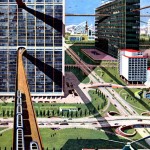
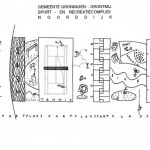
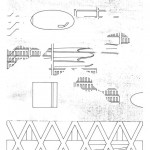
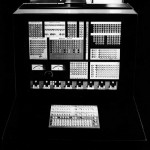
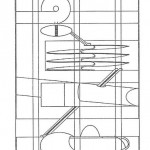
Leave a Reply